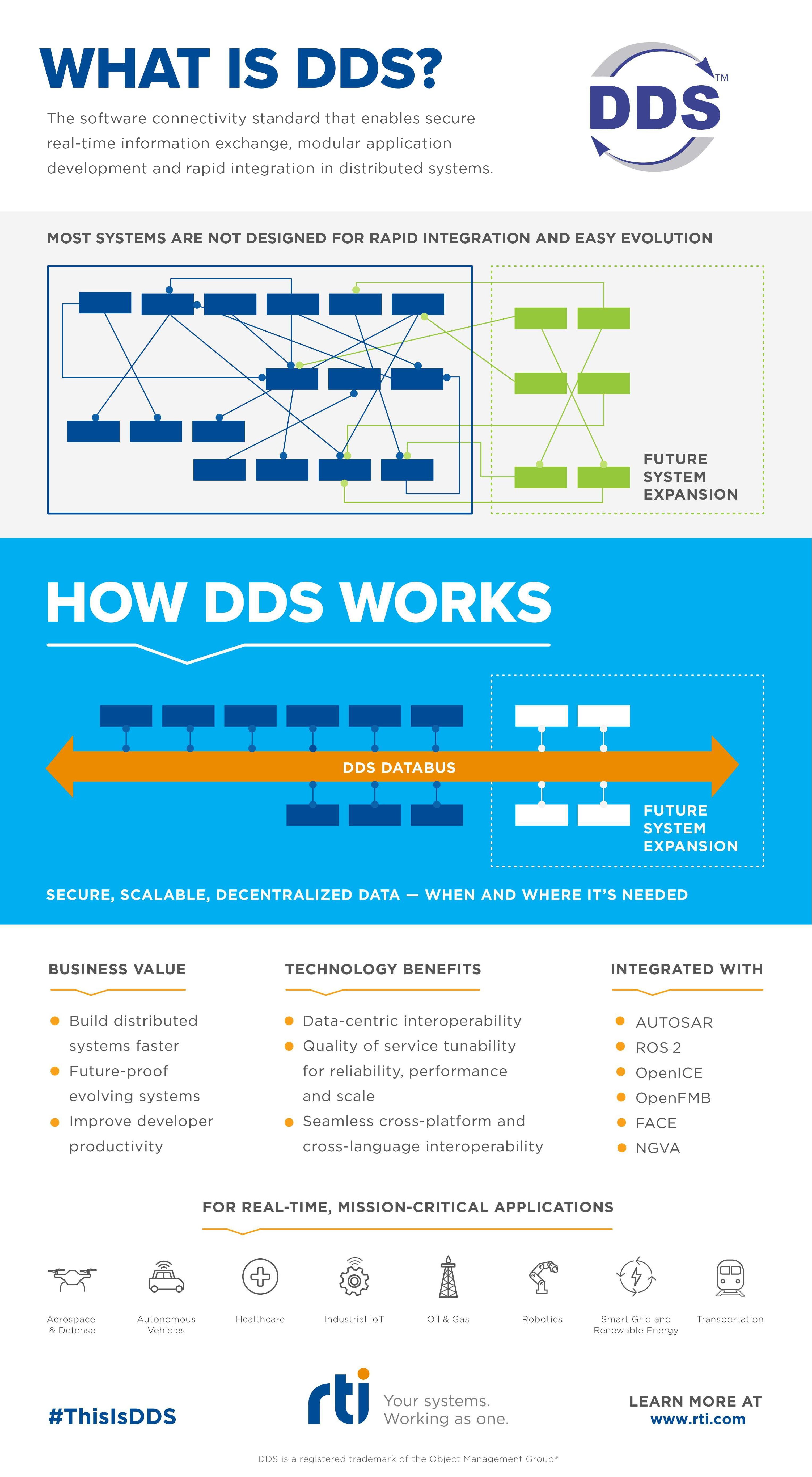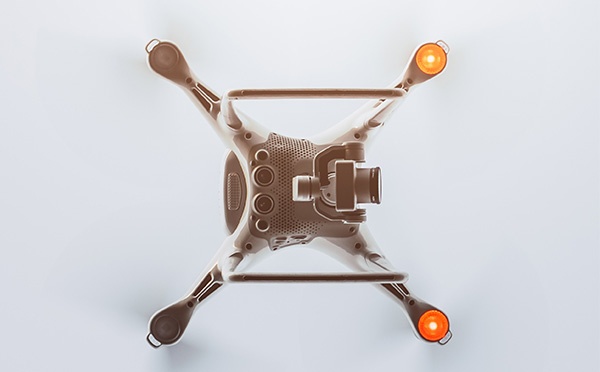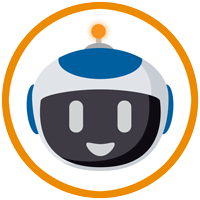DDS Standard
The software connectivity standard providing data connectivity, extreme reliability and a scalable architecture to meet real-time system requirements.

An Open Standard for Real-Time Applications
The Data Distribution Service (DDS™) standard, managed by the Object Management Group (OMG®), is the software connectivity standard that enables secure real-time information exchange, modular application development and rapid integration in distributed systems. As an original author of the standard, RTI has extensive knowledge and experience with the broad implementation of DDS across industries.
- DDS is the only open standard for messaging that supports the unique needs of both enterprise and real-time systems.
- The open interfaces and advanced integration capabilities of DDS slash costs across a system's lifecycle, from initial development and integration through ongoing maintenance and upgrades.
- RTI Connext software includes the world's leading implementation of the DDS standard.

What is DDS?
From the simplicity of early networked systems to the advanced virtual databus design, explore how connectivity has transformed and streamlined communication across applications and systems.
Open Interfaces
DDS fosters the development of loosely coupled, modular and open architecture systems. By supporting well-defined interfaces between components and subsystems, DDS eradicates stovepipe, closed and proprietary architectures. This eliminates complexity to reduce integration, maintenance and upgrade costs; promotes competition at the subsystem and middleware levels; and eases reuse.
-
Portability
DDS was designed from the start to support any programming language. It is the only standard messaging API for C and C++; it also supports Java, C#, Ada, JMS, WSDL/SOAP and REST/HTTP interfaces.
-
Wire Interoperability
The DDS Real-Time Publish-Subscribe (RTPS) wire protocol provides seamless interoperability across implementations, platforms and programming languages.
-
Semantic Interoperability
Applications communicate by exchanging discoverable data objects typically described by a standard data model. The data model can be specified using the OMG Interface Definition Language (IDL), XSD/WSDL, XML or a programmatic interface. It can also be generated from a Unified Modeling Language (UML) model.
-
Many Implementations
At least 10 unique middleware implementations support the DDS API or wire protocol.
Advanced Integration Capabilities
DDS standardizes powerful messaging semantics that reduce development and integration costs while improving system scalability and robustness.
-
Data-Centricity
Data-centric publish/subscribe messaging provides loose coupling, reduces application and integration logic, and scales to systems of systems.
-
Performance
DDS supports the full range of performance requirements from enterprise to high-performance real-time systems. DDS implementations outperform implementation of other standards by up to 3,000x. Connext consistently outperforms other DDS solutions.
-
QoS
DDS defines a comprehensive set of Quality of Service (QoS) policies. These provide control over dynamic discovery, content-aware routing and filtering, fault tolerance and deterministic real-time behavior.
A Versatile Framework
Across many industries, DDS is the chosen or required connectivity standard for mission- and safety-critical applications. Learn more from these examples:
DDS and TSN
Converging two communications standards for deterministic, real-time, end-to-end data distribution in multiple industries.
DDS and FACE
In military avionics systems, developers and integrators take advantage of the DDS standard.
DDS and ROS 2
Production-grade deployment in robotics systems
A Truly Open Standard
- The OMG is one of the largest computer industry consortiums with hundreds of member organizations including IBM, Microsoft, Oracle, Red Hat and Tibco.
- OMG manages the Unified Modeling Language (UML) and other popular software standards.
- Any organization can join and participate in the OMG standardization process.
- Adopted standards are freely available on the OMG web site.
The Connext Product Suite
RTI Connext, compliant with the DDS standard, and now with AI-powered capabilities, is the first software framework designed to develop autonomous systems.

Connext Professional
For time- and mission-critical distributed systems

Connext Drive
For software-defined vehicles

Connext TSS
For FACE-compliant avionics systems

Connext Cert
For ISO 26262 and DO-178C requirements

Connext Micro
For resource-constrained systems
 Success-Plan Services
Success-Plan Services